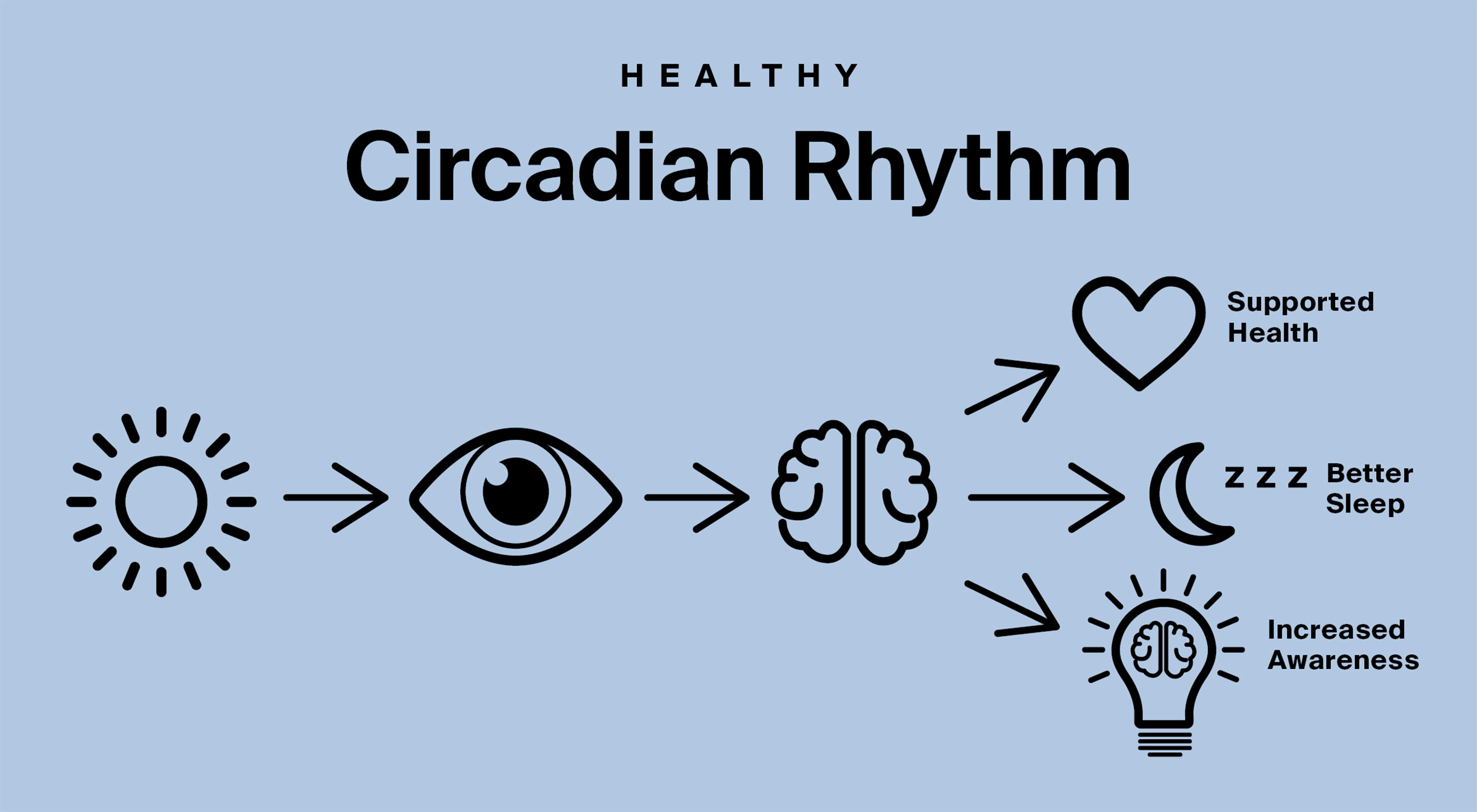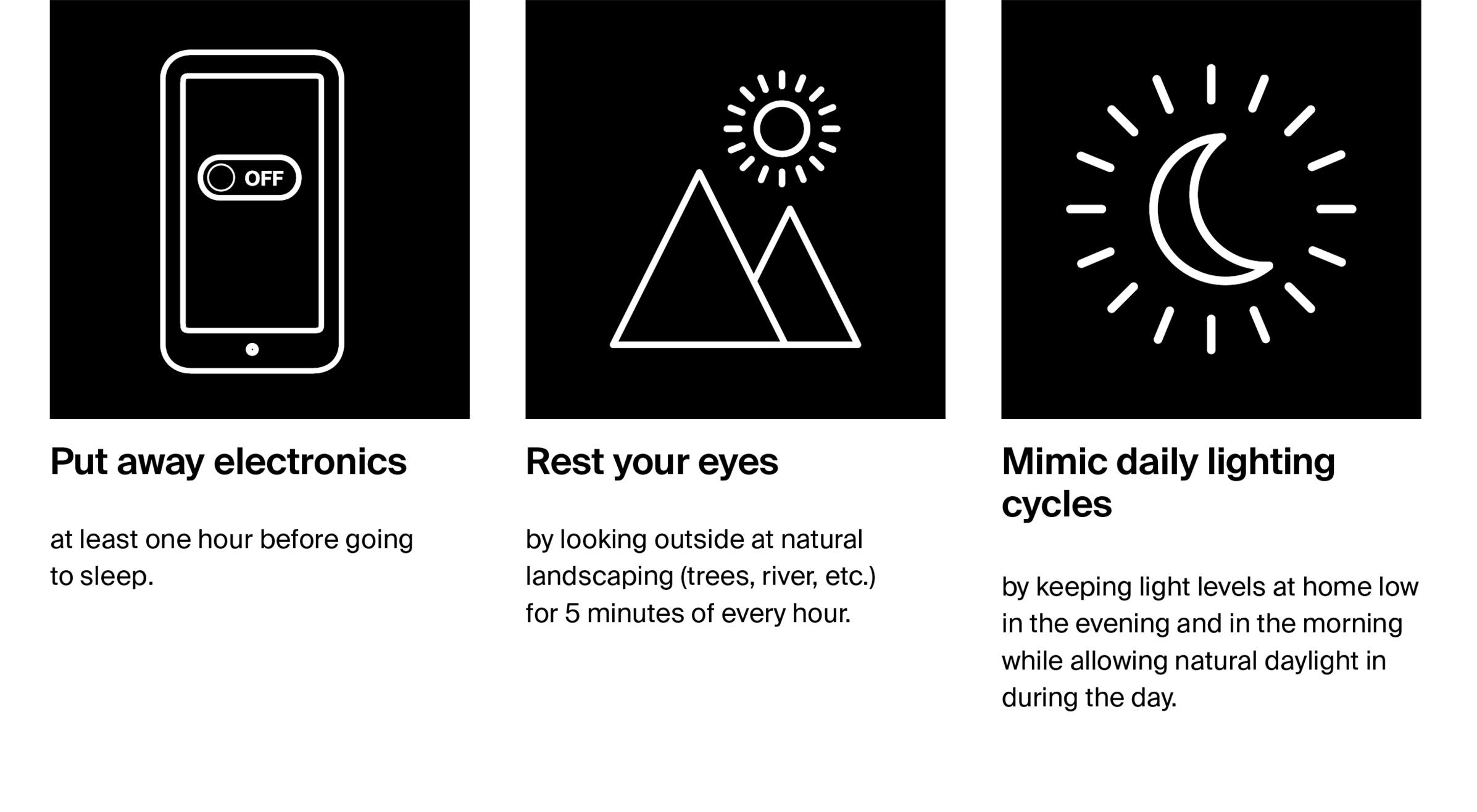What is circadian rhythm?
Our body has a cyclical internal clock that drives our wake/sleep schedule by using lighting stimulus from our environment. Natural daylighting and artificial lighting affect melatonin, the sleep hormone, and serotonin levels in the brain that in turn affect levels of alertness during the day and ability to rest at night.
For example, when the sun rises, and light enters our eyes, our mind will trigger a response to reduce the production of hormones that encourage sleep and will begin producing hormones that promote awareness. During the night our eyes will receive far less light and will trigger a response in our brain to produce different hormones to promote sleep.
The natural flow of light intensity (brightness of sun at noon versus sunset) can help sync the human circadian system to match the light-dark cycle of the rising and setting sun. Recent studies have found that the biologic clock is not on a perfect 24-hour cycle and must be reset each day. Resetting the circadian system each day is known as ‘entrainment’ and is a crucial function that typically is accomplished through the day and night light cycles. Circadian rhythm entrainment was found to be impacted by various lighting factors such as intensity, duration, timing, and wavelength of light.
For example, natural daylight tends to produce low-intensity, red-light during dawn and dusk, while producing higher-intensity, blue-light during the peak of day. The synthetic lights we are typically exposed to are
in the blue spectrum – light between 380-500nm – which is commonly found in TV’s, phones, computers, and most internal light bulbs. This creates a bright morning light environment all hours of the day, and research is showing that this is upsetting our natural rhythms and sleep cycles.
This tricks our brain into thinking it is daytime when using screens early in the morning or late at night, resulting in hormone imbalances, i.e. melatonin was found to be suppressed following two-hour exposure to blue light. This can be an issue when phone use is substantial at night.
Surprisingly, these studies also found that no matter the light wavelength, our body will trigger a response to the light and induce a circadian resetting response.
So how does this impact daylighting design in the built environment?
By mimicking natural lighting cycles, in conjunction with dynamic lighting systems that change the color quality of light throughout the day, the better chance designers have at improving the health and wellness of building occupants. As a result, it is easier to sync circadian rhythms, increasing focus and awareness, better sleep, and therefore the quality of life for building occupants. It is a greater hope that once occupants make the connection between the impact of the natural and built environment on their health, they will be inclined to nurture the environment wherever they go.
- 1
- 2

